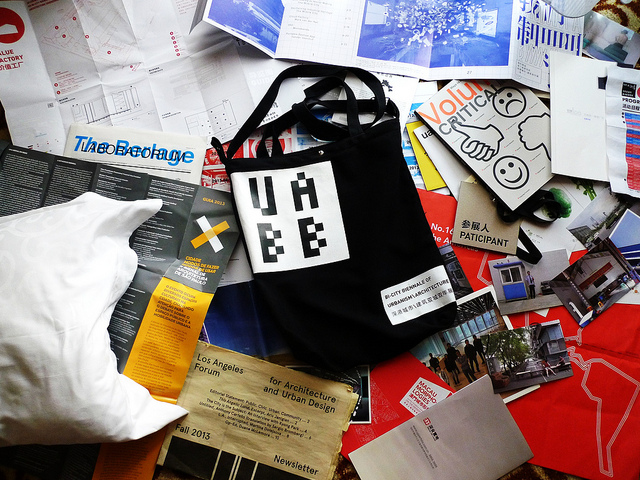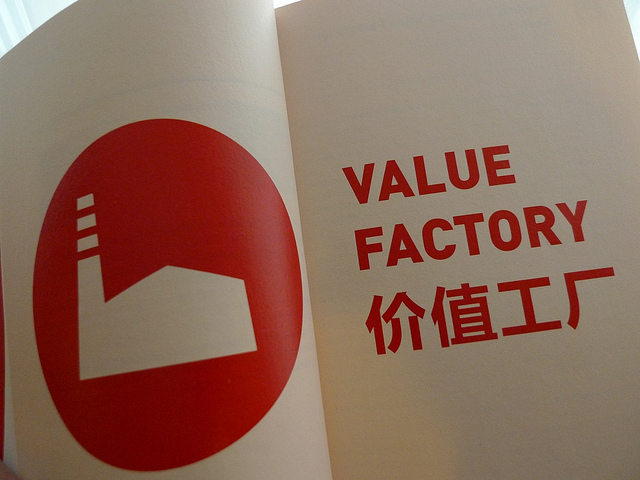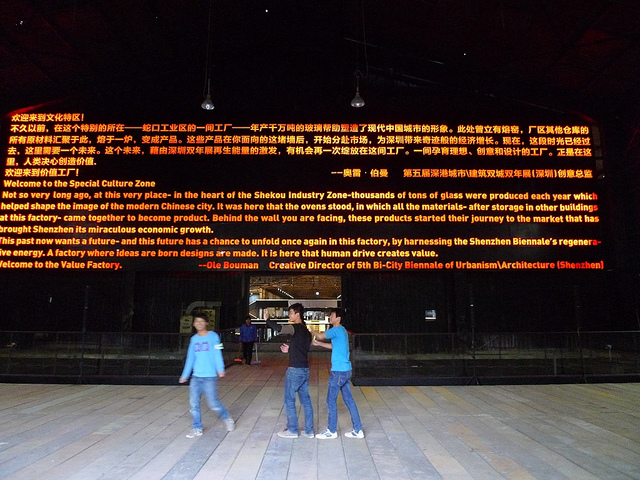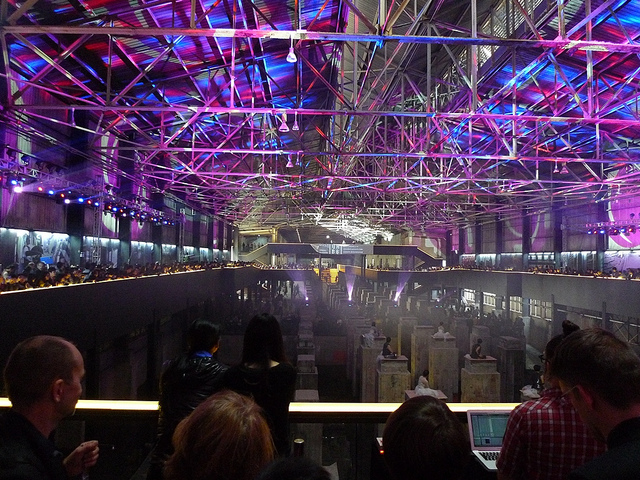I am sleepless and I can't get used to the idea that I am in Shenzhen, China. I might as well be in Las Vegas hotel room with a gold leaf framed watercolor print hanging on the wall and a laptop with a spotty internet access.
This is my first time in China with a mission to attend and journal the opening of Bi-City Biennale of Urbanism\Architecture a.k.a Shenzhen Biennale in a four day trip as the lone participant from Los Angeles. Normally I don't travel in the jet set manner but I was flown here by an invitation from the biennale's creative director Ole Bouman, a man of many talents and hats whom I interviewed for Archinect few years back and I couldn't refuse the offer.
Shenzhen is a port city, like my birthplace Izmir and it has graduated to its current importance as a global player from a small fishing village of 30,000 people just a few decades ago. It is a brand new home to 3.5 million Shenzeners who are made up from different nationalities, trading partners and Chinese working population trying to join middle class, still chancy but not at all impossible given the local and national growth rate.
It is an incredible development for a city coming of an age in such a short time. The pains of urbanization in this rapid pace are somewhat apparent but I would say the city is dealing with them rather skillfully.
Since Shenzhen is new, so are my shoes, socks, pants and shirts.
This is my first time in China with a mission to attend and journal the opening of Bi-City Biennale of Urbanism\Architecture a.k.a Shenzhen Biennale in a four day trip as the lone participant from Los Angeles. Normally I don't travel in the jet set manner but I was flown here by an invitation from the biennale's creative director Ole Bouman, a man of many talents and hats whom I interviewed for Archinect few years back and I couldn't refuse the offer.
Shenzhen is a port city, like my birthplace Izmir and it has graduated to its current importance as a global player from a small fishing village of 30,000 people just a few decades ago. It is a brand new home to 3.5 million Shenzeners who are made up from different nationalities, trading partners and Chinese working population trying to join middle class, still chancy but not at all impossible given the local and national growth rate.
It is an incredible development for a city coming of an age in such a short time. The pains of urbanization in this rapid pace are somewhat apparent but I would say the city is dealing with them rather skillfully.
Since Shenzhen is new, so are my shoes, socks, pants and shirts.
Biennale's main venue in Shenzhen is a defunct plate glass factory in the urban border zone called Shekou. It is the center of the Biennale's ambitions to turn it into a cultural zone of preservation and perhaps leave it as the living history of the industrial past with a newly energized use, co-existing with the vicinity's inevitable gentrification into a high end residential development, an omnipresent transformation pattern in the world's developing cities as it's towering chimney looking over one of the most familiar sceneries of global trade, a shipping container port and other supporting warehouses, not too far away from a creeping shopping mall, a 7-Eleven, a Sea World© and a Wal Mart.
The Glass factory now named as the Value Factory is an irresistibly beautiful industrial building where glass was manufactured to be used on China's modern buildings as recent as 2005. It is next to a bank of silo towers also defunct and turned into exhibition spaces. Biennale, capturing the opportune process is determined to turn it into a cultural value and educational centerpiece all at once. The Value Factory is unlike China's brand new shiny museums of late, designed by missionary architects from the Western Europe and United States and hastily filled up with blue chip art through the deals made in New York, London, etc. This is an interesting difference not only from a preservation and re-use point of view but also helping to build a unique Chinese experience in the "biennale" making to further activate local discourse of cultural value making, a veiled agenda and political act in itself.
additional pictures at:
http://archinect.com/blogs/gallery/88344179/1/a-brief-introduction-to-shenzhen-biennale
http://archinect.com/blogs/gallery/88344179/1/a-brief-introduction-to-shenzhen-biennale




 RSS Feed
RSS Feed
